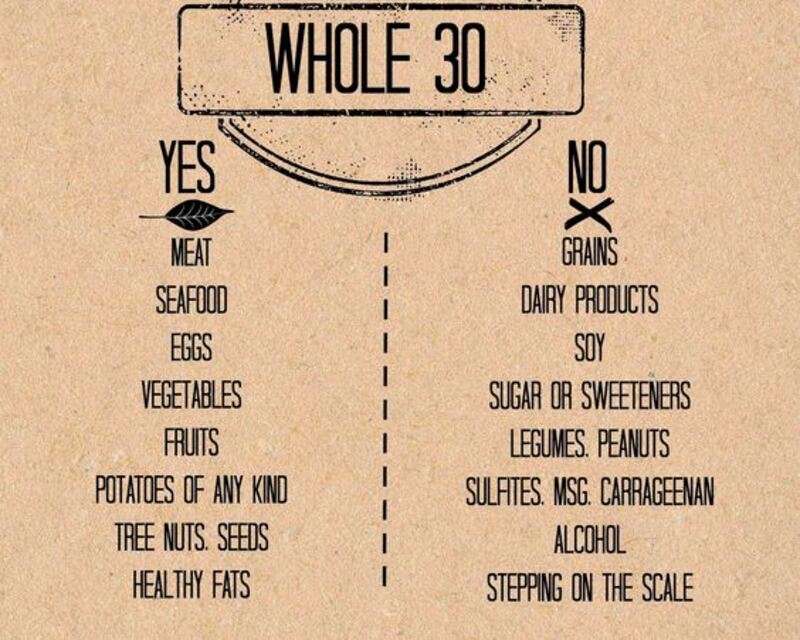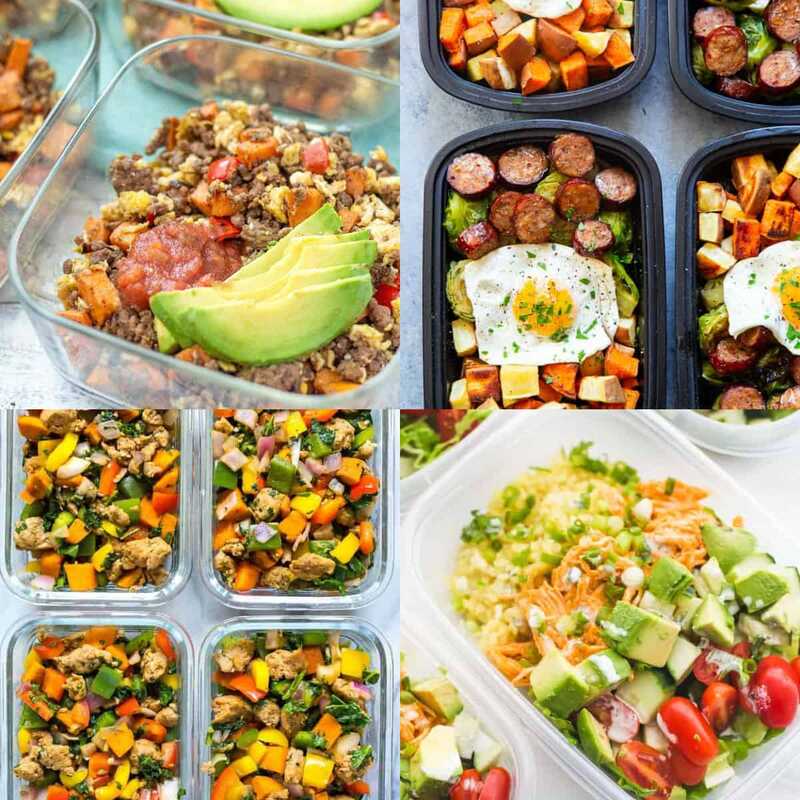Unveiling the Whole30 Challenge
Dec 15, 2023 By Nancy Miller
You embark on the Whole30 journey that could potentially transform your health and well-being. This guide is packed with essential tips for beginners. It’s a comprehensive breakdown of diet inclusions and exclusions and is designed as your compass to successfully navigate through the Whole30 challenge. The program isn't merely a diet. Rather, it embodies a holistic approach aimed at resetting your body while fostering an improved relationship with food.

Whole30 Beginner's Guide
As a beginner embarking on a Whole30, you may experience an amalgamation of excitement and challenges. To ensure success, you must comprehend the fundamental principles of Whole30. This includes eliminating specific food groups for 30 days.
Understanding the Whole30 Program Guidelines
The Whole30 Program structures itself into two distinct phases; a 30-day elimination period, then followed by a 10-day reintroduction phase. You will primarily consume whole and unprocessed foods during the initial 30 days. This is where your focus lies. The extensive list of permitted foods offers you a rich array of options to bolster your health journey.
Do’s - Eat Real Food
Embrace real, whole foods that enhance your overall well-being during the elimination phase. Permissible options encompass:
- Meat, seafood, and eggs
- Abundant vegetables and fruits
- Natural fats
- Herbs, spices, and seasonings
Give priority to foods boasting straightforward ingredient lists, or even better. Select those with no listed ingredients as a testament to their whole and unprocessed nature.
Don’ts - Avoid for 30 Days
To optimize the benefits of the Whole30 Program for the initial 30 days, certain food categories enforce restrictions. These include:
- Added Sugar: Omit all instances of supplementary sugar, both real and artificial. This includes maple syrup, honey, agave nectar, coconut sugar, and date syrup. It also extends to an array of artificial sweeteners.
- Alcohol: You must abstain from consuming all forms of alcohol, including wine, beer, both distilled and undistilled spirits, or any cooking ingredients that contain alcoholic substances.
- Grains: Remove the following grains: wheat, rye, barley, oats, corn, and rice; also eliminate millet. Moreover, despite its gluten-free designation, you should exclude pseudo-cereals such as quinoa.
- Legumes: Say no to all legumes. This includes beans, peanuts, and any form of soy except for green beans and specific peas.
- Dairy: During the Whole30, you must avoid foods that contain carrageenan or sulfites.
- No Baked Goods or Treats: Do not succumb to the temptation of reimagining traditional baked goods, treats, or junk food with Whole30-approved ingredients. This prohibition extends specifically over items such as banana-egg pancakes and coconut-cassava tortillas.
- No Weighing or Measuring: During the 30-day elimination period, avoid using the scale or taking body measurements. Extend your focus beyond weight loss and embrace broader, lifelong benefits.

The Pancake Rule
The "Pancake Rule" encompasses certain foods such as pancakes, crepes, waffles, bread, and tortillas, along with biscuits, muffins cupcakes. It extends further to include cookies and brownies; even alternative flour pizza crust falls under this classification. Pastas also make the list of exclusions. Granola is not exempt either as are cereal products like ice cream.
Moreover, commercially prepared chips or French fries do not escape its provisions! You hold the discretion and you can opt to eliminate additional items that may be compatible but incite cravings or provoke a loss of control.
Exceptions Allowed During Whole30 Elimination
The Whole30 program harnesses certain exceptions to intensify its flexibility. These are:
- Ghee or Clarified Butter: Savor the ghee or clarified butter. Relish it after its milk solids have been meticulously removed.
- Fruit Juice: You may use products or recipes that incorporate 100% fruit juices, such as oranges or apples.
- Certain Legumes: The diet permits green beans and a variety of peas such as sugar snap peas, snow peas, and green peas. It also includes yellow and split peas.
- Vinegar and Botanical Extracts: Permitted are most kinds of vinegar and alcohol-based botanical extracts except for malt-based variants containing gluten.
- Coconut Aminos: Even if the ingredient list mentions "coconut nectar" or "coconut syrup," all brands of coconut aminos which is a soy sauce substitute remain acceptable.
- Iodized Salt: All iodized salt, despite its minimal dextrose content, serves as an acceptable stabilizer.
By understanding these guidelines, you empower yourself to commence a victorious Whole30 expedition. This fosters enhanced health and well-being via thoughtful dietary decisions.
Whole30 Diet Tips
To navigate the Whole30 diet successfully, you must do more than merely know what is permissible and what is not. Consider these essential tips as your guide through the process:
1. Preparation is Key
Take the time to plan your meals and stock up on compliant ingredients before you embark on Whole30. This rigorous and intentional preparation will not only set you up for success but also reduce the likelihood of deviating from the program.
2. Read Labels Thoroughly
To adhere faithfully to Whole30's principles, one must possess a sharp eye for labels. The ability to recognize hidden sugars, additives, and non-compliant ingredients in packaged foods. This is an essential skill, the understanding of how these elements may sneak their way into our diets despite our best efforts.
3. Embrace Whole Foods
Incorporate whole, nutrient-dense foods into your meals with a focus. Embrace the variety of fruits, vegetables, lean proteins, and healthy fats that the program allows for an overall satisfying and well-rounded diet.
4. Diversify Your Recipes
Explore a variety of Whole30-compliant recipes to expand your culinary horizons. Do not limit yourself to repetitive meals. Experiment with new flavors, cooking techniques, and ingredient combinations as this will not only excite your taste buds but also ensure you receive a broad spectrum of nutrients.
5. Plan for Cravings
Acknowledge the potential emergence of cravings, particularly during the program's initial phase. To counter this, ensure you have Whole30-approved snacks available. For example, cut-up vegetables, compliant jerky, or a small handful of nuts. Strategically satisfying minor urges can deter more substantial and non-compliant indulgences.
6. Hydrate Mindfully
Maintaining optimal health necessitates critical hydration, while also assisting hunger management. Therefore, prioritize consistent water intake throughout your day to reap these benefits. Enhance the enjoyment of hydration by experimenting with infused water. Utilize herbs or fruit slices for a refreshing twist.
7. Create a Support System
Share your Whole30 journey with friends and family. Alternatively, join online communities. A support system can furnish not only encouragement but also a platform for discussing challenges and offering recipe ideas as well. Recognizing the collective nature of this process often serves as an incredibly powerful motivator.
8. Meal Prep Smartly
During the week, efficient meal preparation such as pre-cutting vegetables, marinating proteins, or making compliant sauces can conserve both time and energy. By assembling meals quickly, a process made easier through advanced component preparation, you reduce your temptation to prioritize convenience over compliance.

9. Learn and Adapt
Whole30 journeys are unique to each individual. Adapt your recipes, learn from your experiences, and embrace the key element of flexibility. Tailor the program as you advance to dovetail with your lifestyle, thus transforming it into a sustainable long-term commitment that enriches you continually.
Conclusion
Conclude your 30-day Whole30 challenge and celebrate the progress you've achieved in establishing healthier habits. This guide equips you with the necessary knowledge and tools for a successful embrace of the Whole30 lifestyle. Jump-starting weight loss or enhancing overall well-being, both are achievable through embarking on the transformative journey of Whole30 towards a more balanced, healthy life.







